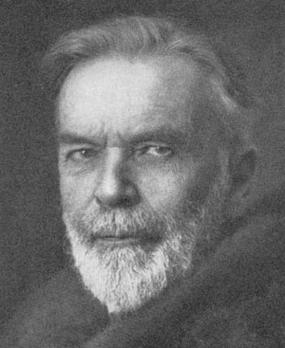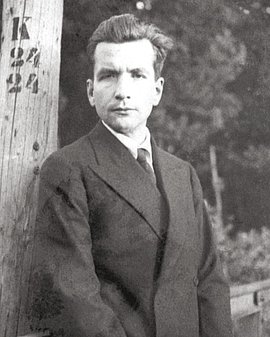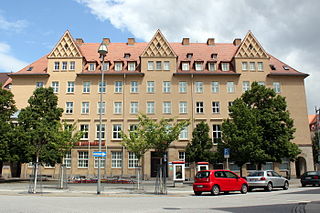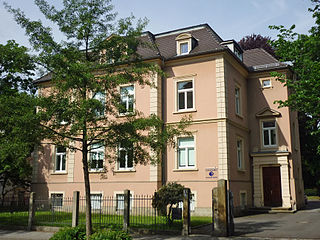Related Research Articles

The Sorbian languages are the Upper Sorbian language and Lower Sorbian language, two closely related and partially mutually intelligible languages spoken by the Sorbs, a West Slavic ethno-cultural minority in the Lusatia region of Eastern Germany. They are classified under the West Slavic branch of the Indo-European languages and are therefore closely related to the other two West Slavic subgroups: Lechitic and Czech–Slovak. Historically, the languages have also been known as Wendish or Lusatian. Their collective ISO 639-2 code is wen.

The Milceni or Milzeni were a West Slavic tribe, who settled in the present-day Upper Lusatia region. They were gradually conquered by Germans during the 10th century. They were part of Sorbian tribes. Modern descendants of the Milceni are the Upper Sorbian-speaking Sorbs of the Free State of Saxony, Germany.

Wilhelm Ludwig Geiger was a German Orientalist in the fields of Indo-Iranian languages and the history of Iran and Sri Lanka. He was known as a specialist in Pali, Sinhala language and the Dhivehi language of the Maldives. He is especially known for his work on the Sri Lankan chronicles Mahāvaṃsa and Cūlavaṃsa and made critical editions of the Pali text and English translations with the help of assistant translators.

Arnošt Muka was a German and Sorbian writer, linguist and man of science.
Johann Wilhelm Fück was a German Orientalist.
Bernhard Schweitzer was a German classical archeologist.

Werner Krauss was a German university professor.
George Guțu is a Romanian philologist, teacher in the Department of German Language and Literature of the Faculty of Foreign Languages and Literatures, University of Bucharest. He is also director of the Paul Celan Center for Research and Excellence and the Master programme "Intercultural Literary and Linguistic Communication Strategies", initiated by the Department of Germanic Languages and Literatures together with other departments of the Faculty of Foreign Languages and Literatures. His academic activity is based on the history of German literature ; German and Austrian contemporary literature; German literature from Romania, cultural inter-referentiality in Central and Southeast Europe, particularly in Bukovina, poetics, literary theory, translation, the history of German studies and guidance for PhD students. His research domains are the history of German literature; comparative literature; German literature from Romania; cultural inter-referentiality; imagology; the history and aesthetics of reception; theory and practice of translation.

Krystijan Bogumił Šwjela was a Wendish/Sorbian Protestant clergyman and ethnic activist in the Lower Lusatia region.
Heinz Schuster-Šewc was a German Sorbian Slavicist and university professor.

Harry Goldschmidt was a Swiss musicologist.
Kathinka Rebling was a German violinist and musicologist.

Marja Kubašec was a Sorbian writer who is considered by literary historians to be the first woman to write novels in Upper Sorbian. Working as a schoolteacher, she wrote theatre plays, short stories, biographies, and novels dealing with the history of the Sorbian people.

Heike B. Görtemaker is a German historian known mostly for her biographies of Margret Boveri, German journalist and writer of the post-World War II period, and Eva Braun, the partner and wife of Adolf Hitler.

The Sorbian settlement area commonly makes reference to the area in the east of Saxony and the South of Brandenburg in which the West Slavic people of the Sorbs live autochthonously. In colloquial German, it is called Sorbenland ; before 1945 also – sometimes pejoratively – called Wendei.
The Sorbischer Rundfunk is the Sorbian language program of Mitteldeutscher Rundfunk (MDR) and Rundfunk Berlin-Brandenburg (RBB), both of which are regional public broadcaster in Germany. It is the only broadcast in a national minority language in Germany.

The Serbski dom is an administrative building on Postplatz 2 in Bautzen, Saxony, Germany. It is the cultural and political center of the Sorbian people. It was built between 1947 and 1956. It is the seat of Domowina and the Foundation for the Sorbian People.

Maria Karoline Elisabeth Grollmuß was a Catholic Sorbian publicist and a socialist resistance member against the Nazi government.
Maćica Serbska is a scientific association of Sorbs. It aims at promoting Sorbian studies and disseminating knowledge about the Sorbs and their culture. It is the oldest Sorbian association that is still operational. Its chair person is Anja Pohontsch since 2020.

The Sorbian Institute is a research facility focused on Sorbian languages, culture and history. It is an extra-university institute collecting and archiving Sorbian texts and cultural artifacts making them available to the public. Originally founded as Institute for Sorbian Ethnology by Pawoł Nowotny in 1951, it was then integrated into the German Academy of Sciences at Berlin in 1952. In 1992, the Sorbian institute was established by a treaty of the two German states Brandenburg and Saxony.
References
- 1 2 3 Werner, Christian (27 May 2005). "Orchideenfach Sorabistik: Bloß keine Ostereier". Der Spiegel (in German). ISSN 2195-1349 . Retrieved 11 March 2023.
- ↑ Dignös, Eva (25 August 2020). "Ungewöhnliche Studienfächer: Sorabistik". Süddeutsche Zeitung (in German). Retrieved 11 March 2023.
- ↑ "Podstupimske pśinoski k Sorabistice = Potsdamer Beiträge zur Sorabistik". Universität Potsdam. Retrieved 11 March 2023.
- 1 2 Scholze, Dietrich. "Sorabistik". Sorabicon (in German). Serbski Institut. Retrieved 11 March 2023.
- 1 2 "Sorabistik". Portal Kleine Fächer (in German). Retrieved 11 March 2023.
- ↑ "Studienangebot". Universität Leipzig (in German). Retrieved 11 March 2023.
- ↑ "Geschichte des Instituts". Universität Leipzig (in German). Retrieved 11 March 2023.
- ↑ Michael, Mark (1 August 2010). "Sorabistik - ein Studienfach mit Jobgarantie". Deutsche Welle (in German). Retrieved 11 March 2023.
- ↑ "Profil". Universität Leipzig (in German). Retrieved 11 March 2023.